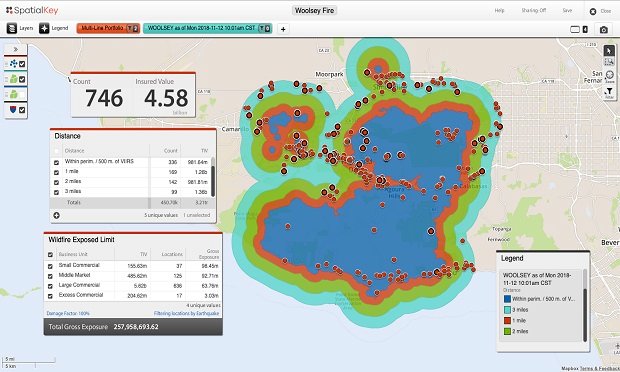Personal auto insurance is already the most commoditized line ofproperty & casualty insurance and is likely to becoming themost exact of the lines in terms of underwriting as insurers spreadthe movement known as usage-based insurance.
|The number of insurers is continuing to grow, according to RobinHarbage, director, TowersWatson, and co-author of a report on the subject, "The Brink ofa Revolution.
|"We are seeing the U.S. market become almost a hotbed [forusage-based insurance]," he said.
|Progressive has been one of the early leaders and continues in that direction, havingintroduced its usage-based product in 37 states and the District ofColumbia thus far, according to Harbage.
|Progressive is not alone, though. Harbage reports the list ofinsurers offering some type of UBI at this point is "kind of awho's who of insurance."
|Among the names bandied about are State Farm, Allstate,Nationwide, The Hartford, and Travelers, as well as many smallerinsurers on the list.
|Towers Watson estimates that auto insurers representing 60percent of the passenger auto market, have launched a product it inat least one state.
|"It's not just an experiment anymore; it's a mainstream productfor some of these companies and they are pushing forward on a rapidbasis," says Harbage.
|At this point in time, all the major insurers are operating itas a voluntary program to consumers so they can take this or buythe normal process as their auto insurance segment, points outHarbage.
|Harbage explains the devices used to track driving habits vary.Some new cars offer original equipment devices, such as OnStar forGM vehicles and Sync from Ford.
|"Those devices track the mileage and behavior of the drivers asthey operate the vehicle," he says. "That's used to creatediscounts for the insureds on their better than average driving orless than average mileage."
|There also is an after-market device the insurers can supply tothe insured that is simply plugged in to the vehicle. All deviceswirelessly transmit the information back to the insurer.
|The common standard, explains Harbage, is the device plugs intothe onboard data port, which was mandated for all vehiclesbeginning in 1996 by the EPA. The port—which also is used for doingemission checks—is linked directly to the onboard computer soanything drivers can see on their dashboard—RPMs, mileage, speed aswell as changes in speed—can be recorded.
|In addition, most of the devices are coming out with GPS unitson them, according to Harbage.
|"They get quite a bit of information about the way the vehicleis operated," he says.
|The information received from the cars is both valuable and verypredictive.
|"Most of what insurers rated on for years were things like adriver's age, gender, marital status or something more intrusivelike credit scores," says Harbage.
|Insureds often wondered how that information related to drivinghabits, according to Harbage.
|"The newer information is not just related to your driving; itis your driving," he says.
|"It's a quantum leap forward in predicting behavior," saysHarbage. "It's taking information, such as where you are taking thevehicle, how fast you are driving, rapid accelerations,decelerations, aggressive maneuvers, and things like that. Insurersare saying there is a certain population of drivers that want toprove they are safe drivers and they are getting substantialdiscounts. Most insurers are offering up to 30 percent discountsjust based on the information provided from the devices."
|Towers Watson is a global professionalservices company and one of its strengths is risk management. It ishelping insurers figure the best way to collect and use informationsuch as what onboard computers are offering.
|"Most of the smaller insurers are saying [all the data] is a bitdaunting," says Harbage. "They don't quite know what to do with itall. It's not like any data they've ever seen before. Luckily, weemploy a number of people who have worked with this kind of databefore."
|Harbage, for one, worked for Progressive and was involved in thelaunch of the first three states.
|Insurers are unsure what the discounts should be and looking fora score of some kind.
|"Much like a credit score, there's a score based on theoperation of the vehicle: where it's driven, when it's driven, howit's driven, how long it's driven," says Harbage. "They provide[the data] to us so we can map a discount that we can provide tothe insurers."
|As programs expand among insurance carriers, Harbage believesthe good drivers will want to step forward and volunteer to be apart of it.
|"What will happen is the other insureds will remain with theinsurers not offering these programs and they will begin to see therate creep up as drivers that don't volunteer for these programsbecome the bulk of the residual pool," he says.
|
Want to continue reading?
Become a Free PropertyCasualty360 Digital Reader
Your access to unlimited PropertyCasualty360 content isn’t changing.
Once you are an ALM digital member, you’ll receive:
- All PropertyCasualty360.com news coverage, best practices, and in-depth analysis.
- Educational webcasts, resources from industry leaders, and informative newsletters.
- Other award-winning websites including BenefitsPRO.com and ThinkAdvisor.com.
Already have an account? Sign In
© 2024 ALM Global, LLC, All Rights Reserved. Request academic re-use from www.copyright.com. All other uses, submit a request to [email protected]. For more information visit Asset & Logo Licensing.








